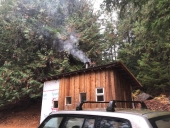












 2
2




Aim High. Fail Small.
Repeat.




Aim High. Fail Small.
Repeat.




 1
1








Karl Harasyn wrote:
What in hoping this would accomplish by having the top of the heat riser submerged, with a jacket around it before passing exhaust is to extract the maximum amount of heat from the fire while also keeping the burn chamber and heat riser hot (as opposed to the water pulling heat directly from an unjacketed heater such as a commercialy available hot tub snorkel stove).
Aim High. Fail Small.
Repeat.

 1
1












Aim High. Fail Small.
Repeat.













Aim High. Fail Small.
Repeat.




Nothing is foolproof to a sufficiently patient fool!
I hate people who use big words just to make themselves look perspicacious.





 1
1








Nothing is foolproof to a sufficiently patient fool!
I hate people who use big words just to make themselves look perspicacious.




Bill Haynes wrote:So it seems what you're looking for is a top fed underwater stove as used for hot tubs.
https://snorkel.com/hot-tub-info/snorkel-and-scuba-stoves.php
Aim High. Fail Small.
Repeat.

|
One day a chicken crossed a road and nobody questioned the motives. Thank you tiny ad.
The new kickstarter is now live!
https://www.kickstarter.com/projects/paulwheaton/garden-cards
|






